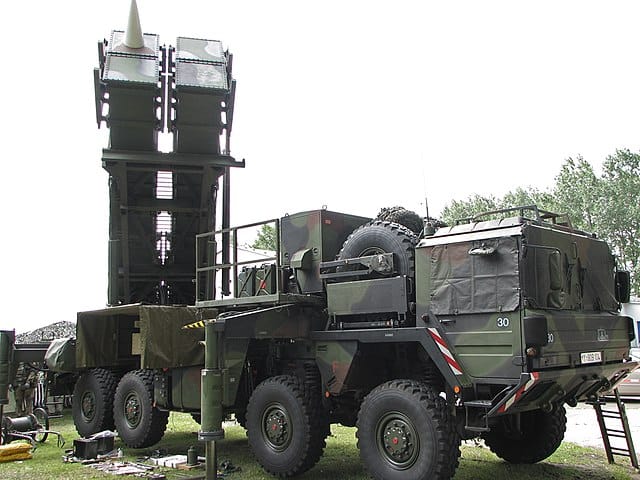Saudi Arabia Eyes Late 2024 for GCAP as G20 Talks Progress
Saudi Arabia may join the British-Italian-Japanese GCAP program by late 2024, adding financial backing to the sixth-generation fighter jet initiative. Talks focus on cost-sharing, production in Saudi Arabia, and technology transfer concerns.
The Global Combat Air Programme (GCAP), the British-Italian-Japanese sixth-generation fighter development initiative, is in advanced discussions with Saudi Arabia regarding potential partnership expansion. Italian Prime Minister Giorgia Meloni, British Prime Minister Keir Starmer, and Japanese Prime Minister Shigeru Ishiba addressed the cooperation framework during recent G-20 meetings in Brazil, indicating progress in negotiation phases.
Current Status of GCAP Expansion
The British-Italian-Japanese GCAP program, initially established to develop a sixth-generation fighter to succeed the Eurofighter Typhoon and F-2, is in discussions with Saudi Arabia regarding potential partnership. Italian Foreign Minister Antonio Tajani confirmed ongoing negotiations, stating "the agreement will be extended to Saudi Arabia." Industry sources indicate a possible agreement by end-2024, though timeline adjustments may occur. The expansion would add a fourth partner to the development program, potentially affecting both cost distribution and industrial participation frameworks.
Political and Regulatory Considerations
The Japanese government has made significant legislative changes to facilitate arms exports for this collaboration - a historic shift in policy. Notably, Labour's Keir Starmer gave final approval in November, resolving previous uncertainties about the UK's commitment. For Saudi Arabia, earlier tensions regarding Eurofighter exports, particularly with Germany over the Yemen conflict, have recently been resolved, with Berlin lifting its veto on additional Eurofighter sales to Riyadh.
Security and Technology Transfer Concerns
Japanese stakeholders have expressed reservations about Saudi Arabia's reliability as a technology partner, particularly given the Kingdom's relationships with Russia and China. These concerns center on the sharing of military secrets, marking a significant departure from Japan's traditional exclusive defense cooperation with the United States. Any agreement would likely require tacit U.S. approval.
Cost Structure and Financial Implications
While total GCAP development costs remain undisclosed, the financial framework is substantial:
- UK's initial Tempest allocation: £2.4 billion
- Italy's commitment: €8.8 billion through 2035
- Expected minimum total government funding: €40 billion
- Saudi Arabia's entry could significantly reduce per-partner costs
Technical Development and Industrial Cooperation
The GCAP fighter jet, known publicly as Tempest, was first unveiled at the 2018 Farnborough Airshow. Recent developments include an enhanced 19-meter model featuring improved aerodynamic properties and an estimated combat radius of 3,200 kilometers - approximately 10% greater than the current Eurofighter. The aircraft is designed to operate at altitudes up to 15,500 meters and can be configured for both fighter and bomber roles, with unmanned variants under consideration.
Technical System Architecture
GCAP's design encompasses an integrated combat system that combines the new fighter platform with unmanned aerial vehicles and reconnaissance capabilities. The program includes comprehensive data linking with satellite systems and ground control infrastructure. The development allows for both manned and unmanned configurations, following current military aviation trends toward optionally piloted platforms.
Read more about fighter jet capabilities: Turkeys F-35 Ambitions Resurface:

Industrial Framework and Development Timeline
The project's industrial structure has recently been finalized with equal rights distribution among BAE Systems, Mitsubishi Heavy Industries, and Leonardo - a significant shift from the initial plan of 40-40-20 split. The program headquarters will be located in the UK, with four major development sites planned. Leonardo's CEO Roberto Cingolani confirmed agreements on work share and management positions, with Leonardo focusing on flight systems integration, weaponry, and training aspects.

Saudi Arabia's Industrial Participation Framework
For Saudi Arabia, GCAP participation aligns with existing defense capabilities and infrastructure development plans. The kingdom currently operates 70 Eurofighter aircraft, with pending approval for 48 additional units. Industry sources indicate that Saudi participation would likely include establishing production facilities within the kingdom, supporting its broader initiative to develop domestic aerospace manufacturing capabilities. This industrial aspect would represent a significant step in Saudi Arabia's defense sector development, though the exact scope of technology transfer and manufacturing rights remains under negotiation.
Competitive Dynamics with FCAS
GCAP's expansion creates additional pressure on the rival Future Combat Air System (FCAS) program led by Germany, France, and Spain. The competition between these programs reflects broader strategic realignments in European defense. While GCAP targets service entry by 2035-2040, FCAS is notably behind schedule, with Dassault projecting deployment "not before 2045" and some German Air Force estimates suggesting closer to 2050.
Read more on European integrated defense programs on grosswald.org

Future Prospects and Industrial Impact
The success of Saudi Arabia's integration into GCAP could accelerate the program's development while complicating its international cooperation framework. If managed effectively, the partnership could establish a new model for global defense collaboration, combining traditional allies with strategic partners from outside established defense circles. As of now, GCAP's target of replacing the Eurofighter Typhoon and F-2 fighter jets by 2035 remains ambitious but achievable with sustained financial and political commitment.
Further Sources: Reuters, Frankfurter Allgemeine Zeitung







